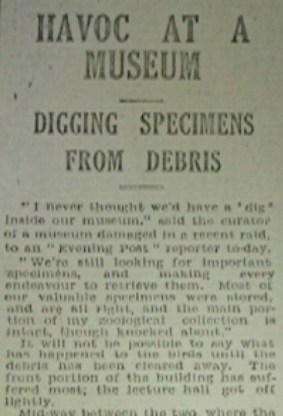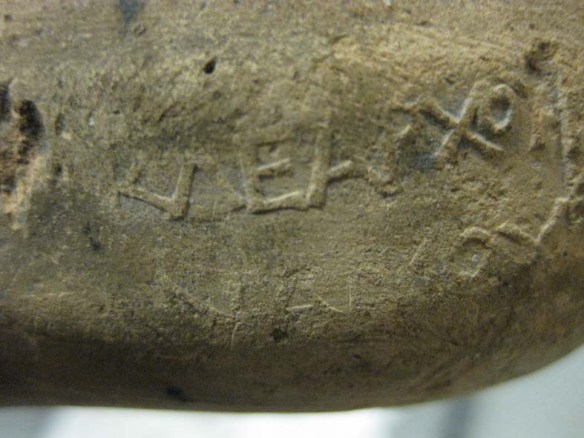Looking back over the 20th century history of the Leeds City Museum, it’s impressive that the Cypriot artefacts and associated records have survived as well as they have.
At 3am on Saturday 15th March, 1941, the museum was struck by a German bomb. No-one was killed or seriously injured, but there was major damage to the museum’s structure and contents – including the Archaeology collection.
I find it amazing that, among this utter confusion and destruction, someone found the time and inclination to take a photograph of the archaeology shelves. All those objects, so carefully collected and curated, lying in disarray. Travelling thousands of years and miles to be in that place at that time. Those in charge of the museum were faced with a task akin to the original excavation, as reflected by the archaeological metaphor used by the Curator, Mr Herbert Ricketts:
It’s no wonder that there are a few chips and cracks among the Leeds collection; what’s more surprising are the pieces that survived virtually unscathed. These include the jug visible on the fourth shelf on the right of the 1941 photograph:
It has survived to tell its story – more on that another time.






